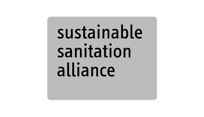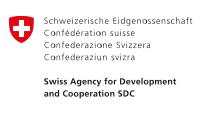The systematic and formal reuse of domestic solid waste materials is commonly limited to the return of specific items of a single type, such as glass bottles. It is mainly implemented at a commercial level, where companies reuse holding vessels such as glass jars. Formal reuse can save waste management efforts and make usable goods available for private sector entities

Reuse is the prolonged use or repurposing of recovered waste materials without material transformation processing. Reuse contrasts with recycling where items are broken down into raw materials and used to generate new products T.6. Without the need for material transformation, reuse is a resource and energy-efficient approach. At a household or community level, reuse normally happens before items enter the waste stream and is a kind of waste prevention P.1. Materials are repeatedly used for the same or similar task or repurposed for a new function. The reuse of discarded domestic solid waste is usually carried out by commercial enterprises using a systematic and formal approach in which specific items of a single type are returned and then re-enter production streams. Examples include glass bottles or jars that are collected, cleaned, refilled and reused again in new sales. The formal reuse of recovered waste materials at a household or community level can create challenges, including entitlement to the recovered items, cleanliness and social acceptance.
Design Considerations
Systematic and formal reuse requires the collection of specific, separate unused items which are of value to commercial entities. Waste segregation at source P.2 at household, public and institutional levels is essential to ensure the availability, cleanliness and intactness of reusable items. If initially mixed with other waste, reusable items might be contaminated or damaged, which significantly reduces or prevents their reuse. Systematic and formal reuse requires collaboration with specialised commercial entities interested in collecting packaging materials or vessels to use for their own or comparable products. In such cases, commercial entities normally engage directly in the collection of items and execute any further processing of them.
Materials
Companies typically collect used packaging materials or holding vessels separately and feed them back into their production streams. Consequently, SWM providers are not involved in the reuse and are not required to provide equipment. The companies normally supply suitable trays or crates for bottles and holding vessels.
Applicability
Because of the need for waste segregation and commercial interest, systematic and formal reuse is likely to be limited to stable or protracted contexts or development settings. The overall viability of reuse depends on the cleanliness, intactness, quality and perceived value of the recovered materials as well as the interest and need of commercial entities to reuse or repurpose the materials. Implementing formal reuse mechanisms in humanitarian settings is unlikely. The availability of reusable materials can be low as the items are often directly reused or repurposed before entering the waste stream. Additionally, reusable items require thorough source-segregation and industries capable of processing reusable items located within manageable distances.
Operation and Maintenance
Systematic and formal reuse requires adequate cleaning and the sterilisation of returned items, but that is usually done by the commercial entities and is not part of the work of SWM providers.
Health and Safety
Qualified commercial entities are required to adequately clean and sterilise the items and check whether their structural integrity has been compromised. This prevents cross-contamination from other waste, the spoiling of refilled food produce and reused vessels from breaking or leaking. Occupational health and safety X.4 is the responsibility of the commercial actors.
Costs
Formal reuse does not cost SWM service providers, as the return and processing of reusable items is organised and executed by commercial entities. The separate return of reusable materials to commercial entities can, however, reduce waste amounts and corresponding waste management efforts and may reduce costs.
Social Considerations
Commercial reuse relies on individuals and households returning specific items such as packaging materials and holding vessels. They must therefore be sufficiently informed about the option and process of returning used items as well as the types of items required.
Key Decision Criteria
Input Products
Plastics
Glass
Response Phase
Application Level
Management Level
Space Required
low
Technical Complexity
low
Objectives & Key Features
Handover for reuse
Strength & Weakness
- Helps to reduce the amount of waste requiring disposal
- An energy and resource-efficient approach for commercial entities
- Makes usable goods available for commercial entities
- Requires the presence and involvement of commercial entities
- Requires sensitisation and instructions for individuals and households
Selected References
General overview of reuse of waste materials
UNEP (2005): Solid Waste Management, United Nations Environment Programme, Kenya






